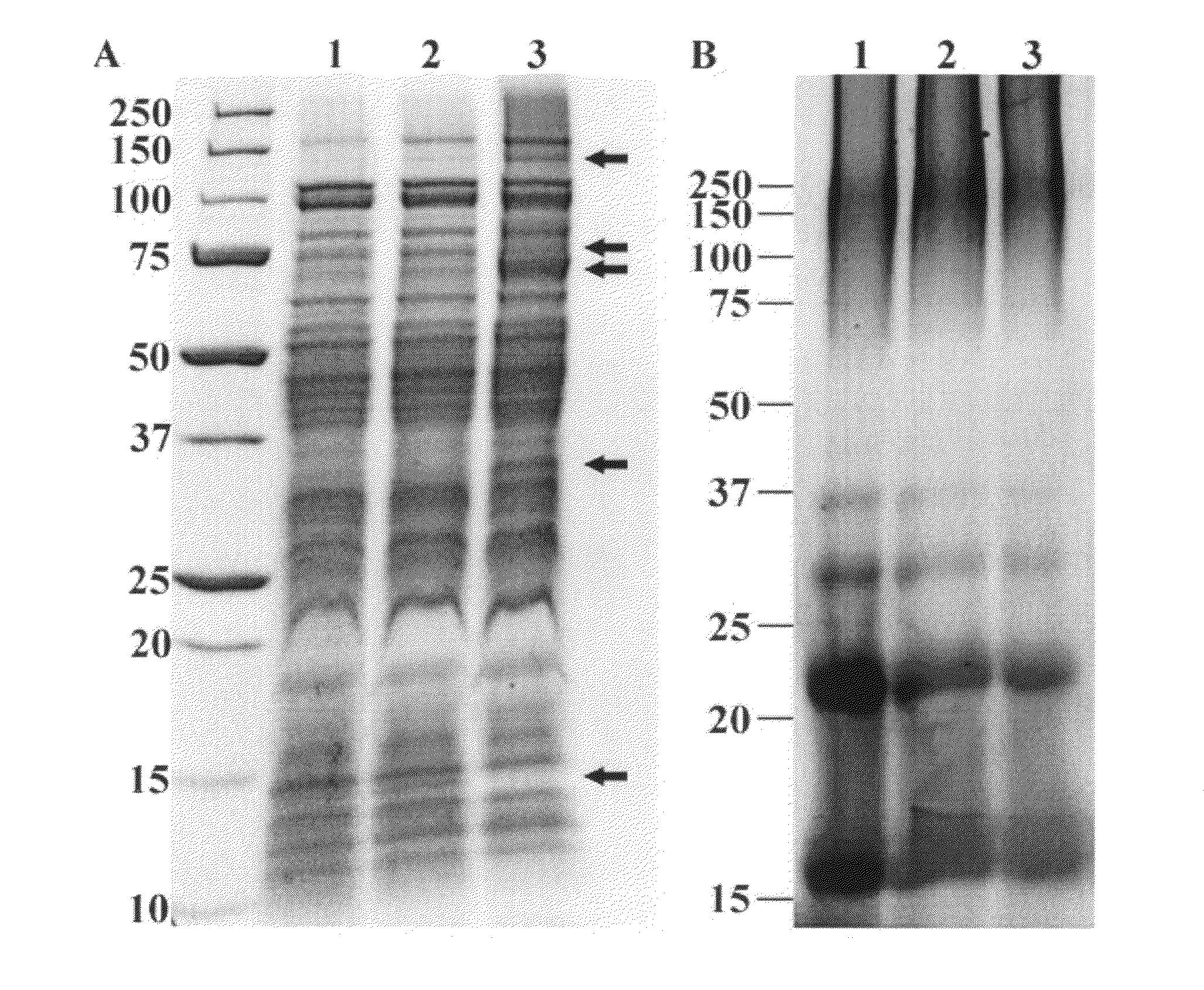Vaccines for diseases of fish
a technology for fish diseases and vaccines, applied in the field of vaccines to protect fish, can solve the problems of limited treatment options, inability to detect and treat bacteria, and inability to detect bacteria,
- Summary
- Abstract
- Description
- Claims
- Application Information
AI Technical Summary
Benefits of technology
Problems solved by technology
Method used
Image
Examples
example 1
Generation of Attenuated Live Bacterial Strains
[0048]A virulent strain of F. psychrophilum, CSF-259-93, as described in Sudheesh et al, Diseases of Aquatic Organisms, 74:37-47 (2007), was used as the parent strain to generate rifampicin resistant strains. A previously frozen glycerol stock of CSF-259-93 was plated for isolation on tryptone yeast extract salts (TYES; 0.4% tryptone, 0.04% yeast extract, 0.05% MgSO4.7H2O, 0.05% CaCl2.2H2O, pH 7.2) agar and incubated at 15° C. for 5 d. A single colony was passed to TYES agar containing 5 μg ml−1 rifampicin (Sigma, St. Louis, Mo., USA) and incubated at 15° C. for 6 d. Two of the resulting colonies were randomly selected, designated 259-93A and 259-93B, and independently passed to TYES agar containing increasing concentrations of rifampicin. This process was repeated until the 259-93A and 259-93B strains achieved growth at rifampicin concentrations of 200 and 250 μg ml−1, respectively. This required 16 passages for the 259-93A strain (des...
example 2
Culture of Bacteria
[0049]Growth curves of the CSF-259-93, 259-93A.16 and 259-93B.17 strains were determined. Each strain was pre-cultured in 20 ml TYES broth at 15° C. for 72 h. The optical density of each culture was adjusted to 0.1 at 525 nm using sterile TYES broth. Duplicate culture tubes containing 20 ml TYES broth were inoculated with 50 μl of the adjusted cultures from each strain and incubated at 15° C. for 9 d on an orbital shaker (80 rpm). The growth was monitored daily by measuring the optical densities at 525 nm.
[0050]For the challenge and immunization trials, frozen glycerol stocks of each respective strain were plated for isolation on TYES agar and cultured for 96 h at 15° C. Several colonies were passed into 20 ml TYES broth and cultured for 72 h at 15° C. Following 72 h growth, 2 ml of the culture was inoculated into 200 ml TYES broth and cultured for 72 h at 15° C. Bacteria were then harvested by centrifugation at 4300×g for 15 min and the supernatant was removed. B...
example 3
Preparation of Whole-Cell Lysates and Carbohydrate Extractions
[0051]Whole-cell lysates and carbohydrate extractions of the CSF-259-93, 259-93A.16 and 259-93B.17 strains were prepared and analyzed by sodium dodecyl sulfate-polyacrylamide gel electrophoresis (SDS-PAGE). Each strain was cultured in 200 ml of TYES broth for 72 h at 15° C. Cells were pelleted by centrifugation at 4300×g for 15 min at 4° C. and washed twice with sterile PBS.
[0052]Whole-cell lysates were prepared by resuspending approximately 80 mg (wet weight) of cells from each strain into 1 ml sterile PBS and then cell suspensions were sonicated four times for 30 s each at 20% amplitude (Model 500 Sonic Dismembrator, Fisher Scientific, Pittsburgh, Pa., USA). Whole-cell lysates were cooled on ice for 2 min between each 30 s sonication step. Following sonication whole-cell lysates were frozen at −80° C. The protein concentration of each whole-cell lysate was determined using a micro BCA protein assay (Pierce, Rockford, Il...
PUM
| Property | Measurement | Unit |
|---|---|---|
| immersion time | aaaaa | aaaaa |
| immersion time | aaaaa | aaaaa |
| immersion time | aaaaa | aaaaa |
Abstract
Description
Claims
Application Information
 Login to View More
Login to View More - R&D
- Intellectual Property
- Life Sciences
- Materials
- Tech Scout
- Unparalleled Data Quality
- Higher Quality Content
- 60% Fewer Hallucinations
Browse by: Latest US Patents, China's latest patents, Technical Efficacy Thesaurus, Application Domain, Technology Topic, Popular Technical Reports.
© 2025 PatSnap. All rights reserved.Legal|Privacy policy|Modern Slavery Act Transparency Statement|Sitemap|About US| Contact US: help@patsnap.com


